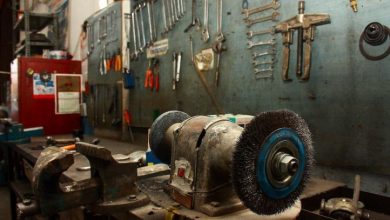Evaluating Wheelbarrows: a Buyer’s Guide

When it comes to completing outdoor tasks and projects, having the right tools is essential. One such tool that many homeowners and gardeners find invaluable is the humble wheelbarrow. With its ability to transport heavy loads and navigate uneven terrain, a wheelbarrow can make even the most demanding tasks seem effortless. However, with so many options available on the market, choosing the right wheelbarrow can be a daunting task. In this buyer’s guide, we will explore the key factors to consider when evaluating wheelbarrows to help you make an informed purchase decision.
1. Capacity and Size
The first thing to consider when evaluating wheelbarrows is their capacity and size. Wheelbarrows come in various sizes, ranging from small garden carts to larger contractor-grade models. The capacity of a wheelbarrow determines how much weight it can carry, so it is essential to choose a size that suits your needs. For smaller tasks such as gardening or light construction, a wheelbarrow with a capacity of 4-6 cubic feet may be sufficient. However, for more substantial projects, opting for a wheelbarrow with a larger capacity of 8-10 cubic feet is recommended.
2. Material and Durability
The material used in the construction of a wheelbarrow is another crucial factor to consider. Wheelbarrows are commonly made from steel, aluminum, or plastic. Steel wheelbarrows are known for their durability and can withstand heavy loads without bending or breaking. However, they may be heavier and prone to rust. Aluminum wheelbarrows are lightweight and resistant to rust, but they may not be as strong as their steel counterparts. Plastic wheelbarrows are lightweight and resistant to rust and corrosion, but they may not be as durable as metal options. Consider the type of tasks you will be using the wheelbarrow for and choose a material that best suits your needs.
3. Wheel Type and Maneuverability
The type of wheel on a wheelbarrow greatly affects its maneuverability. There are two main types of wheels used in wheelbarrows: pneumatic and solid. Pneumatic wheels, similar to those found on bicycles, are filled with air and provide excellent shock absorption, making them ideal for navigating rough terrain. Solid wheels, on the other hand, are made from solid rubber or plastic and are puncture-proof. While they may not offer the same level of shock absorption, they are maintenance-free and suitable for use on smooth surfaces. Consider the type of terrain you will be working on and choose a wheel type that provides optimal maneuverability.
4. Handles and Grip
The handles of a wheelbarrow play a crucial role in its usability and comfort. Look for wheelbarrows with ergonomic handles that provide a comfortable grip and allow for easy maneuvering. Some wheelbarrows feature cushioned or padded handles, which can help reduce hand fatigue during extended use. Additionally, consider the handle length and adjustability. Longer handles can provide better leverage, while adjustable handles allow for customization to suit different user heights.
5. Additional Features
Finally, consider any additional features that may enhance the functionality of the wheelbarrow. Some wheelbarrows come with built-in trays or compartments for holding tools, allowing for easy access while working. Others may have dumping mechanisms that make unloading the contents effortless. Consider your specific needs and look for wheelbarrows that offer features that align with those needs.
In conclusion, when evaluating wheelbarrows, it is essential to consider factors such as capacity, material, wheel type, handles, and additional features. By carefully assessing these factors, you can ensure that you choose a wheelbarrow that is not only suitable for your needs but also durable and reliable. Remember, investing in a high-quality wheelbarrow will make your outdoor tasks and projects much more manageable and enjoyable in the long run.




